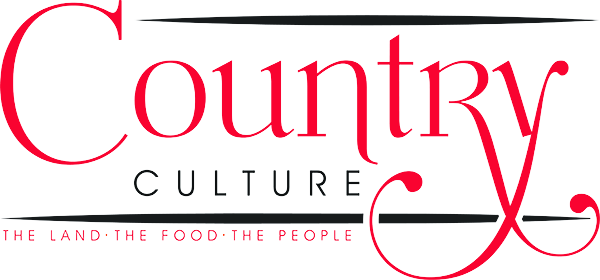Tips on planning a U-pick experience
People love to take pictures and post them. They also love fresh produce. Why not marry the two and consider turning your crop-only operation into a tourist attraction?
That’s what seventh-generation farmer Chris Eckert, president and CEO of Eckert’s Orchard, spoke about at the most recent Great Lakes Expo. With farms encompassing more than 600 acres in southern Illinois, with land in Belleville, Millstadt and Grafton (part of the St. Louis market), and one more in Versailles, KY (purchased in 2017), planning, starting and running U-pick operations has been “an experiment – and Mother Nature continues to be a humbling force.”
The focus of this presentation was on the Belleville farm, open from May 1 through the end of October for U-pick visitors. The farm’s restaurant is open year-round.
Eckert noted before he began, “I don’t claim to have the answers” when it comes to this sort of operation. He was simply sharing his own experience.
The first bit of business is obvious: crop selection. The most important things to consider are the crops’ adaptability to your climate; the capital cost to establish them; the gross value per acre; the labor demand to produce these crops; and their compatibility with other crops. Most important, obviously, is the consumer demand for the chosen crops and formulating a retail season strategy for them.
“Our goal is to have a crop to pick as many weekends of the year as possible,” Eckert said. Their cycle is strawberries, then black raspberries/blackberries, then peaches, followed by apples, pumpkins and finally, Christmas trees.
“If the weather’s right, people will want to come to your farm,” he said. Unfortunately, the only thing they could have available for U-pick in January was horseradish, which doesn’t draw many folks, no matter how nice the weather is. (They also tried five acres of asparagus, but there was no demand for it.)
Eckert noted that June is a relatively challenging time, as berries are mostly done by then, and November can be tough too.
Their farm’s customers are looking for the same produce as many others. Their crops, in order of U-pick value, are apples, pumpkins, peaches, strawberries, blackberries and then Christmas trees. (In their climate, they can only grow white pines; being able to grow fir trees would add more value.) The Christmas trees are not “wildly profitable” but they do drive traffic in December.
Eckert’s grows their apples using a tall spindle system. “It’s not for everyone. For us, it’s good for crowd management,” Eckert said. They also use drape nets to keep “explorers” out of areas of the orchard they shouldn’t be in.
Their plasticulture strawberries are high-yielding, and they’re seeing increased demand (and sales) with them. Growing in plasticulture are results in earlier production vs. matted row, and they’re easier for visitors to pick.
A not insignificant investment was made into a rotating trellis for their blackberries. “It’s expensive upfront but the return on investment is real,” Eckert admitted. “It’s a wall of berries.”
A well-flowing farm layout – for both the growers and the guests – is critical. The logistics are as important as the crop you grow, Eckert said.
Identify where the crops you chosen can be grown; how many acres are needed for the demand and healthy rotation; and what crops need to be located close together. Eckert said for them, it makes sense to keep apples and pumpkins close together, as well as blackberries and peaches.
For visitors, consider your road layout – both how they will safely arrive on your property and how they’ll move about once they’re there.
Looking specifically at orchard design, Eckert’s has a row length of 400 to 500 feet between roads, although in their experience, pickers usually only travel about 250 feet. They plant their trees in ripening sequence. They also keep “generous room” between rows and roads and have designed the roads to allow for good circulation.
The Belleville farm comprises 70 total acres, with 20 dedicated to parking, 16 to apples, six to peaches, six to pumpkins, three to strawberries and 2.5 to blackberries. Eckert admitted that this farm is a little too small to produce all the pumpkins they need, but during the years they’re not growing pumpkins on one of these fields, corn is planted for a haunted hayride.
However, a new option may be joining the rotation. “There’s a whole new market in flowers – we’re looking at sunflowers and lavender,” Eckert said.
This location’s anticipated sales per acre, with a normal crop, are:
- Apples – $15,000 – $20,000
- Pumpkins – $10,000 – $12,000
- Peaches – $11,000 – $13,000
- Strawberries – $15,000 – $20,000
- Blackberries – $15,000 – $20,000
- Christmas trees – $3,000 – $5,000
After deducting inputs and labor, “the overall value is about $13,000 per acre,” Eckert said, and that’s just in the U-pick produce. That number doesn’t factor in what they make from parking fees, retail sales or admission revenue.
“We recognize we are in the entertainment business. We’re just a backdrop for Instagram photos,” Eckert joked. “But guests value the experience as much as, if not more than, the products. We do more in admissions that we do with any crop. Designing a beautiful and efficient farm creates customer value and saves operating expenses.”
Keep that advice in mind if you’re planning to open or expand your agritourism venture.
by Courtney Llewellyn




